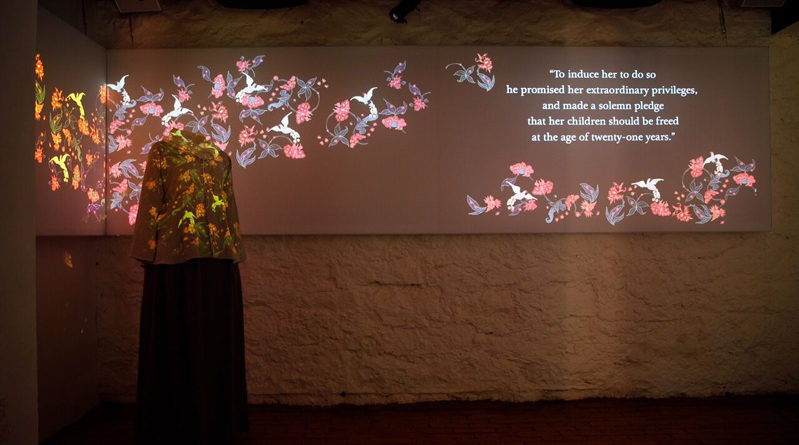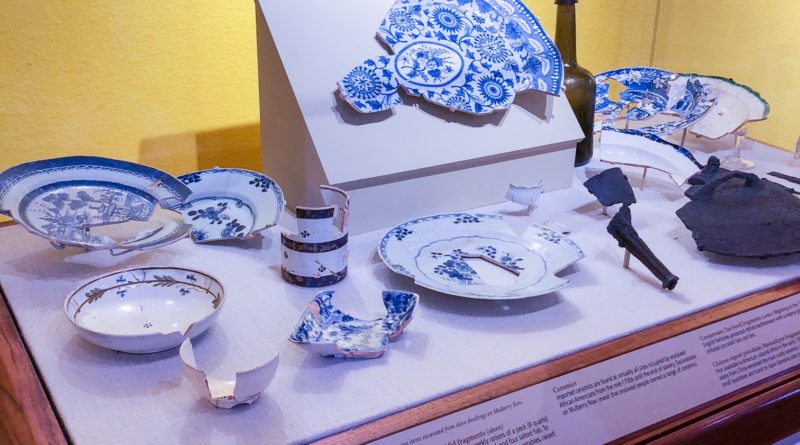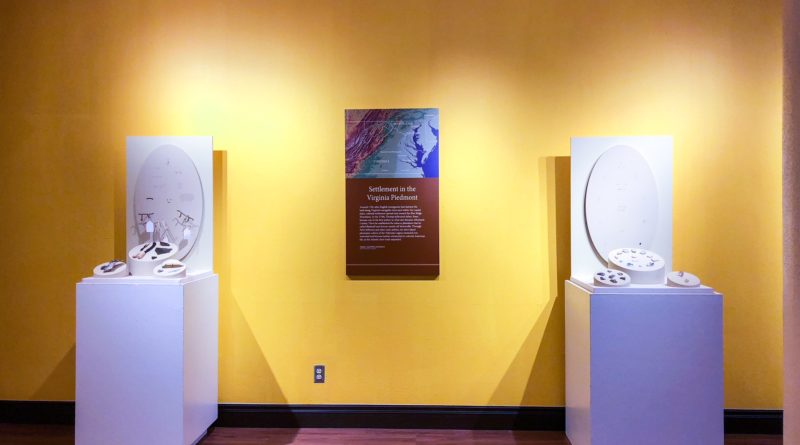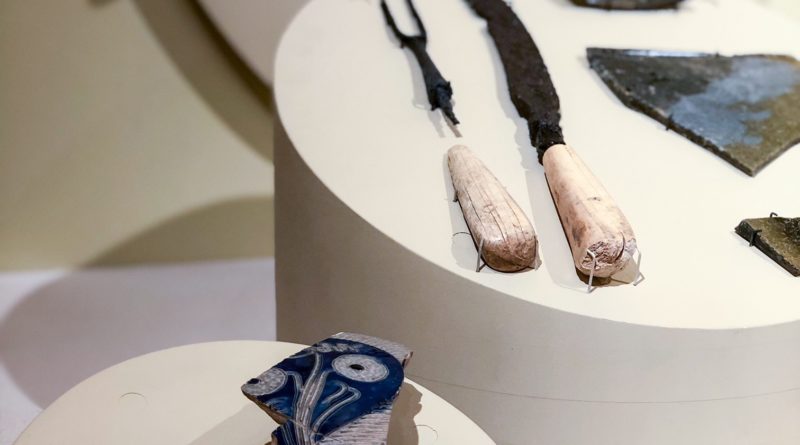Groundbreaking Exhibit Opens this Weekend at African American Museum
A groundbreaking and widely acclaimed exhibition with a powerful message, Slavery at Jefferson’s Monticello: Paradox of Liberty opens this weekend at the African American Museum, Dallas in Fair Park.
Dallas is the first city tour to host the updated traveling exhibition, which brings to life the story of slavery at Monticello through more than 300 objects, works of art, documents, and artifacts unearthed at the storied plantation.
The exhibition features new items never seen outside of Monticello, including a special feature on Sally Hemings, one of the most famous African American women in American history. As an enslaved woman at the age of 16, Hemings negotiated with one of the most powerful men in the nation ensuring she would receive “extraordinary privileges” and achieve freedom for her children. Jefferson fathered at least six children with Hemings, four of whom survived to adulthood.
 “This is a big deal. It is a big deal for Dallas, for Monticello, and it’s a really big deal for me,” said Gayle Jessup White, Monticello’s community engagement officer, and a Hemings family and Jefferson descendant. “This is a story about people who’ve been written out of history … (people who) are the backbone of this country.
“This is a big deal. It is a big deal for Dallas, for Monticello, and it’s a really big deal for me,” said Gayle Jessup White, Monticello’s community engagement officer, and a Hemings family and Jefferson descendant. “This is a story about people who’ve been written out of history … (people who) are the backbone of this country.
“Our sweeping American story, wonderful and woeful as it is, leaves out too many people whose contributions have been ignored or denied. This exhibit returns those forgotten men, women and children to the American narrative, restoring to them not only their place in history but also their very humanity.”
Slavery at Jefferson’s Monticello: Paradox of Liberty is organized by the Thomas Jefferson Foundation at Monticello and the African American Museum, Dallas in partnership with the National Endowment for the Humanities and in cooperation with the City of Dallas Office of Cultural Affairs and VisitDallas. Dallas City council member Kevin Felder spearheaded the effort to bring the exhibition to Dallas.
Felder, who represents District 7, said the exhibit is part of a conversation that needs to be had in America.
“I’m even more excited that the conversation begins here,” he said. “This exhibition delivers a powerful message, one that has the potential to educate, inspire, and promote greater understanding, which is something we now need more than ever.”
Slavery at Jefferson’s Monticello: Paradox of Liberty is an exhibition that uses Monticello, the home and plantation of Thomas Jefferson, to explore the dilemma of slavery and the lives of the enslaved families and their descendants.
The exhibition presents Monticello as a microcosm of the American story – a lens through which to understand the complicated dynamics of America’s founding, and the ways in which the legacies of slavery continue to shape the nation.
Thomas Jefferson’s iconic words in the Declaration of Independence – “all men are created equal” – inaugurated a new nation defined by principles of freedom and self-government, while a fifth of the population remained enslaved. Jefferson called slavery “an abominable crime,” yet he owned 607 people over the course of his lifetime.
This exhibition uses the power of place and ideas at Monticello to grapple with the paradox of slavery in an age of liberty. Most notably, Slavery at Jefferson’s Monticello brings individuals and families out of the shadows of chattel slavery, pulling from more than 50 years of archaeology, documentary research and oral histories to fill in the critical human dimension missing from many resources on slavery in the United States.
 Through the exhibition, visitors “meet” members of six families who lived and labored at Monticello, as well as their descendants. Their family stories form a narrative arc from slavery to freedom that reflects the trajectory of the nation at large – an ongoing journey to realize the foundational promise that “all men are created equal.”
Through the exhibition, visitors “meet” members of six families who lived and labored at Monticello, as well as their descendants. Their family stories form a narrative arc from slavery to freedom that reflects the trajectory of the nation at large – an ongoing journey to realize the foundational promise that “all men are created equal.”
Paradox of Liberty briefly examines Jefferson’s views, actions and inaction on slavery, and then focuses on the enslaved individuals and families who lived and labored at Monticello. In addition to objects belonging to Jefferson, more than 300 archaeologically recovered artifacts elucidate the lives and work of six enslaved families, making for a visually rich, powerful presentation. Using material from the Getting Word Oral History Project, the exhibition follows the families through Emancipation into the present.
“The popular story, however, is usually told from Jefferson’s perspective,” Jessup White said. “The objective of this exhibition is a bit different – to convey her life through her eyes. We want visitors to understand Sally Hemings as a person through her family roles as a mother, daughter and sister.
Highlights of the touring exhibition include:
- A featured section on Sally Hemings and her children. Daughter, mother, sister, aunt. Seamstress. Negotiator. Liberator. World traveler. Enslaved woman. Concubine. Inherited property. Mystery. Sally Hemings was all of these things. She is one of the best-known African American women in American history. Sally Hemings had at least six children fathered by Thomas Jefferson. Four survived to adulthood. Two left Monticello in 1822 and passed into white society (before Jefferson’s death in 1826), and the two younger sons were freed in his will upon reaching their majority. In a later account, their son Madison Hemings described his mother as Jefferson’s concubine.
- “Picturing Mulberry Row” is a digital recreation of the lost landscape of Mulberry Row, the industrial hub of Jefferson’s plantation that describes how the plantation thoroughfare changed over the course of Jefferson’s lifetime.
- New descendant stories, recorded by Monticello historians through the Getting Word Oral History Project since 2012.
- Slavery at Monticello App: Debuted in 2015, the app makes use of the most recent scholarship on Monticello’s enslaved community and the activities and livelihoods centered on Mulberry Row.
“The goal is for visitors – actual and virtual – to understand her struggle and the struggle of all enslaved people, intellectually and viscerally. While we will reference and summarize her link with Jefferson and its 200-plus-year controversy, the main story is Sally Hemings and her children.”
The exhibition runs Sept. 22 – Dec. 31, 2018.
Tickets are $10 for adults, $5 for seniors (65 and older), $5 for children 4-12, and free for children 3 and under. Also, admission is free on Thursdays only for seniors 65 and older. African American Museum members are free.
For details and to purchase individual, group and school field-trip tickets, please go to MonticelloinDallas.com. (Tickets also may be purchased at the Museum.)









